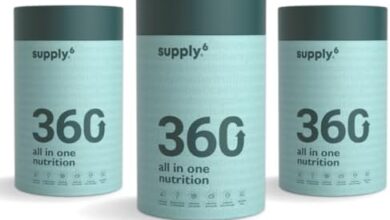HRV Score Explained: What’s a Good Heart Rate Variability by Age & Gender

Heart Rate Variability (HRV) is becoming an increasingly popular metric for evaluating overall health, fitness, and resilience to stress. As wearables and health tech tools become more sophisticated, understanding HRV scores has never been more important. One question that often arises is: What is a good HRV score? HRV chart by age & gender. This article explores what HRV actually measures, why it matters, and how age and gender influence what is considered a “good” HRV score.
What is HRV and Why Does It Matter?
HRV refers to the variation in time between consecutive heartbeats. This might seem counterintuitive—shouldn’t a healthy heart beat like clockwork? In reality, more variability between beats is generally a good sign. It indicates a flexible autonomic nervous system capable of adapting to stress, activity, and rest.
A high HRV score typically suggests better cardiovascular fitness, greater stress resilience, and a balanced nervous system. Conversely, low HRV may be a sign of stress, fatigue, poor sleep, or underlying health concerns. That’s why tracking HRV can offer valuable insights into overall wellness.
See also: The Grounded Life: How Earthing Sheets Can Improve Your Sleep and Health
Factors Influencing HRV
While HRV is a highly individualized metric, several factors commonly influence it:
- Age: HRV tends to decline with age as the body’s autonomic responsiveness diminishes.
- Gender: Studies have shown that men and women often display different HRV patterns due to hormonal and physiological differences.
- Fitness Level: Athletes and individuals with regular physical activity typically exhibit higher HRV.
- Stress and Sleep: Chronic stress, poor sleep, and mental fatigue can lower HRV.
- Lifestyle: Smoking, alcohol, and poor diet are known to adversely affect HRV.
HRV Score by Age and Gender
Since HRV is so context-sensitive, it’s important to consider benchmarks that are appropriate for one’s demographic. Understanding what constitutes a “good” HRV score begins with consulting a reliable HRV chart by age and gender.
Here is a simplified breakdown of typical HRV values (measured in RMSSD, one of the most common HRV metrics):
HRV Score by Age:
| Age Group | Average HRV (RMSSD) |
| 20–29 | 55–105 |
| 30–39 | 45–95 |
| 40–49 | 35–85 |
| 50–59 | 30–75 |
| 60+ | 20–65 |
HRV Score by Gender:
- Men: Often show higher baseline HRV, particularly in younger age brackets.
- Women: Tend to have slightly lower HRV on average, but the difference is not always clinically significant. Hormonal fluctuations can also impact HRV variability more dramatically.
For a more personalized interpretation, visit the full What is a good HRV score? HRV chart by age & gender guide from Pulsetto.
How to Improve Your HRV Score
The good news is that HRV isn’t fixed—it can be improved with conscious lifestyle changes. Some effective strategies include:
- Regular Physical Activity: Cardiovascular exercises and strength training both support autonomic balance.
- Quality Sleep: Prioritizing 7–9 hours of restful sleep boosts overnight HRV recovery.
- Stress Management: Breathing exercises, meditation, and mindfulness can elevate HRV by reducing sympathetic nervous system dominance.
- Healthy Nutrition: A diet rich in omega-3s, antioxidants, and low in processed foods helps maintain a strong HRV baseline.
- Cold Exposure & Vagus Nerve Stimulation: Techniques like vagus nerve stimulation (e.g., using devices like Pulsetto) have shown promise in promoting parasympathetic activity and improving HRV.
Why HRV is a Powerful Metric for Modern Wellness
More than just a number, HRV acts as a real-time barometer for physiological well-being. For athletes, HRV can guide training intensity. For everyday users, it can signal when it’s time to rest, recover, or take stress-reducing actions.
As personal health tracking becomes more mainstream, HRV provides a meaningful and non-invasive way to assess how the body responds to both short-term lifestyle decisions and long-term health strategies.
Final Thoughts
HRV is a dynamic metric, shaped by age, gender, lifestyle, and overall health. While there is no “one-size-fits-all” number, the ranges above offer a helpful baseline. By understanding what is a good HRV score based on age and gender, individuals can take proactive steps toward improving their physical and mental well-being. Monitoring and improving HRV isn’t just for elite athletes—it’s a smart strategy for anyone interested in optimizing their health.





